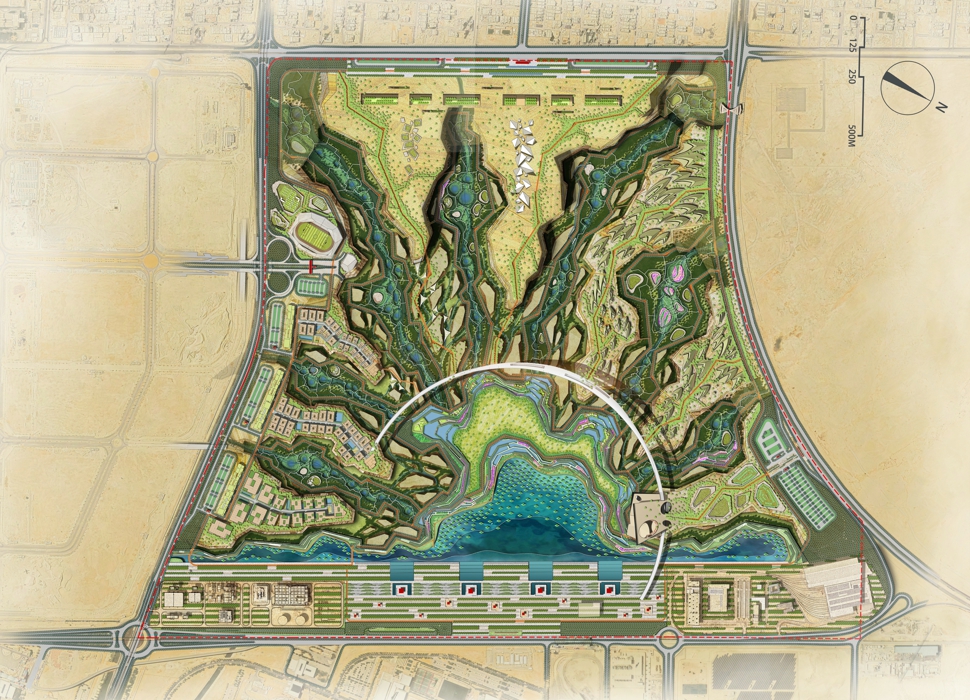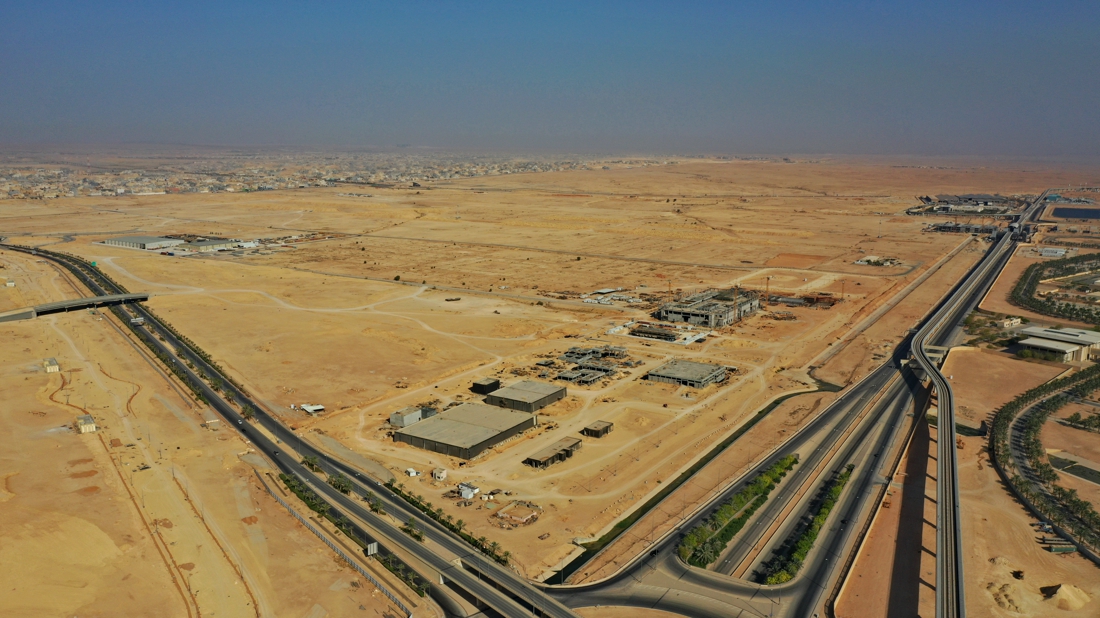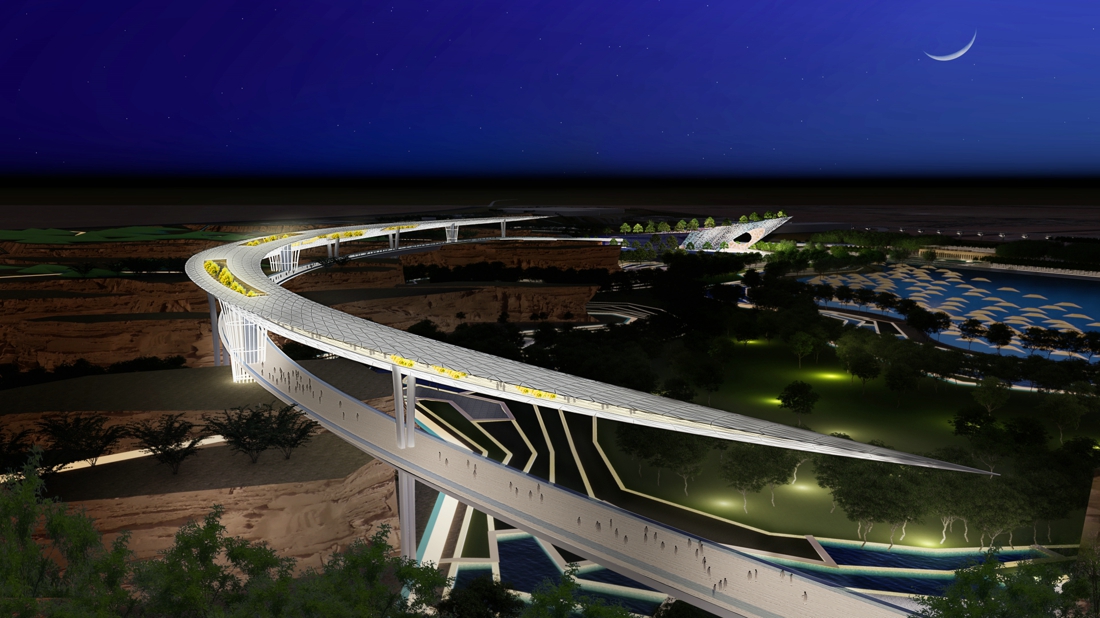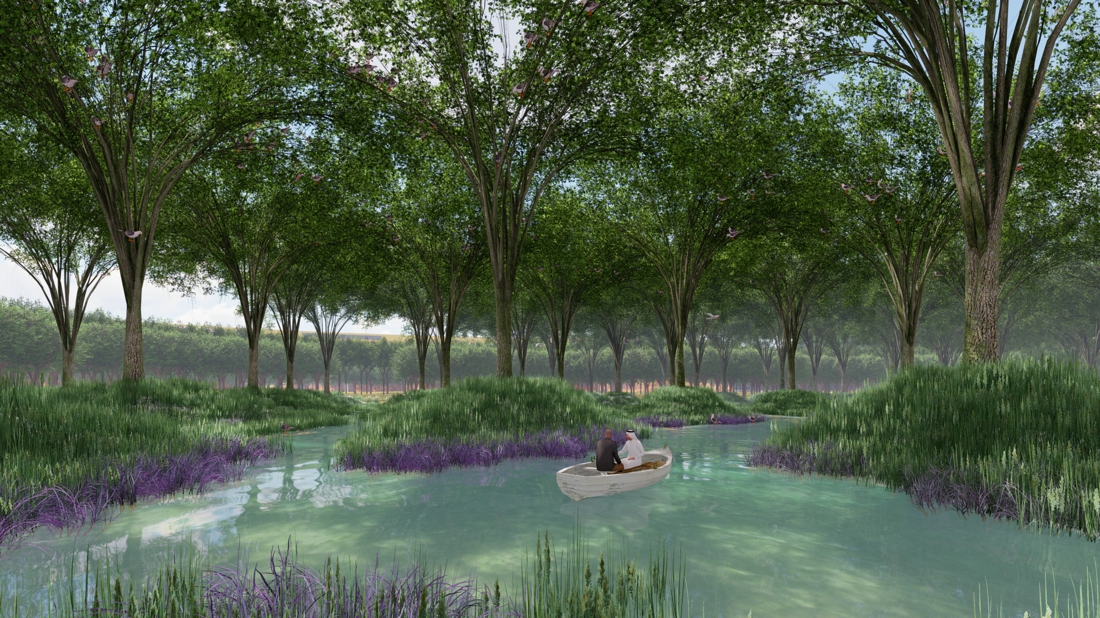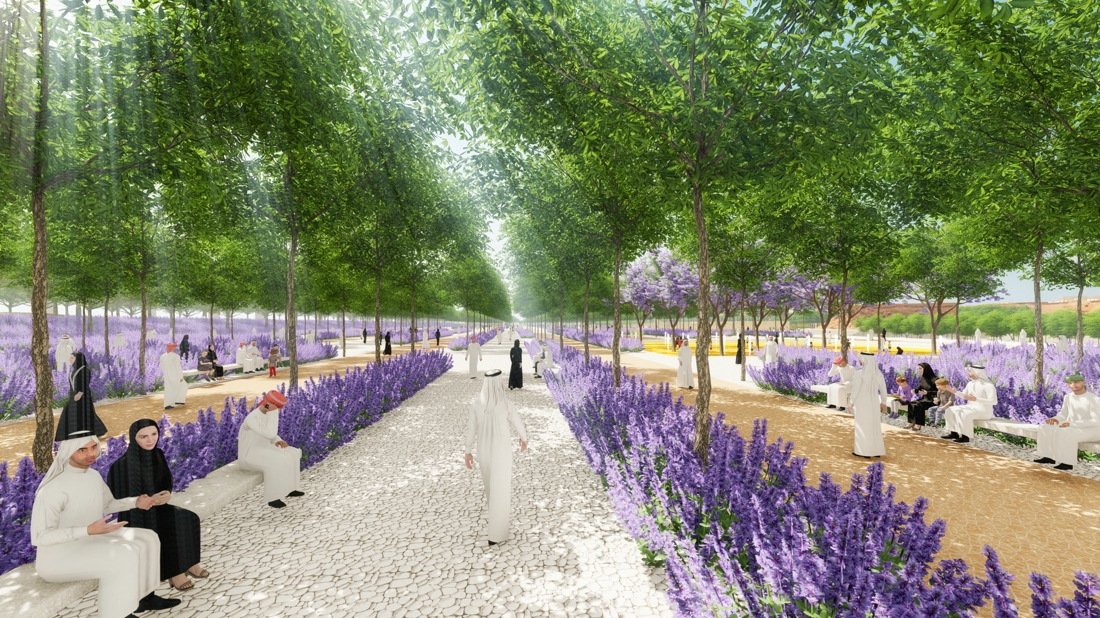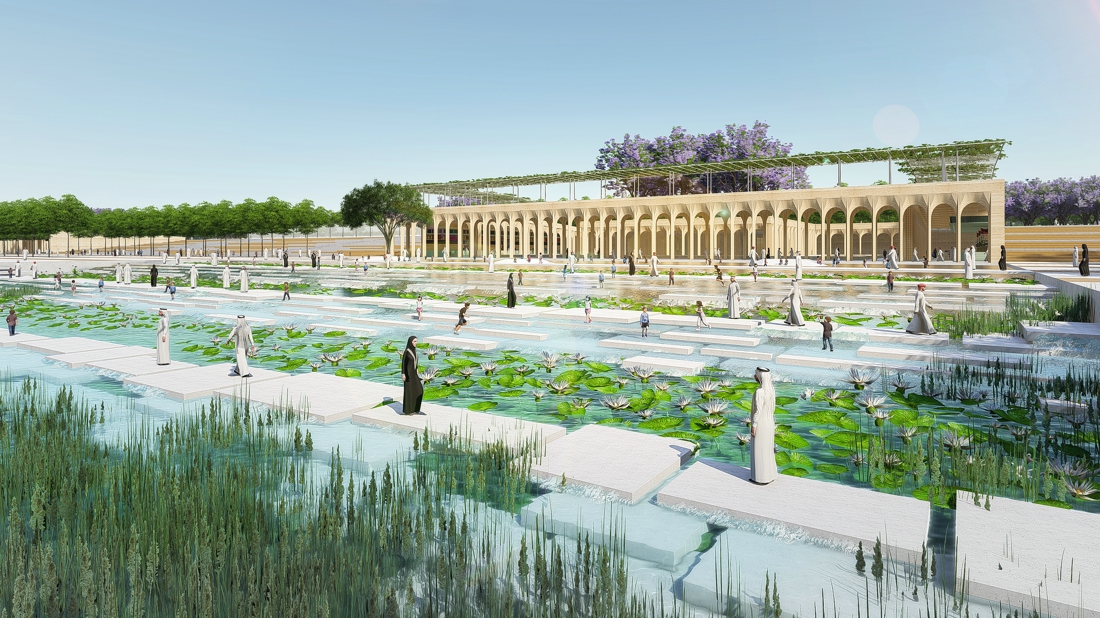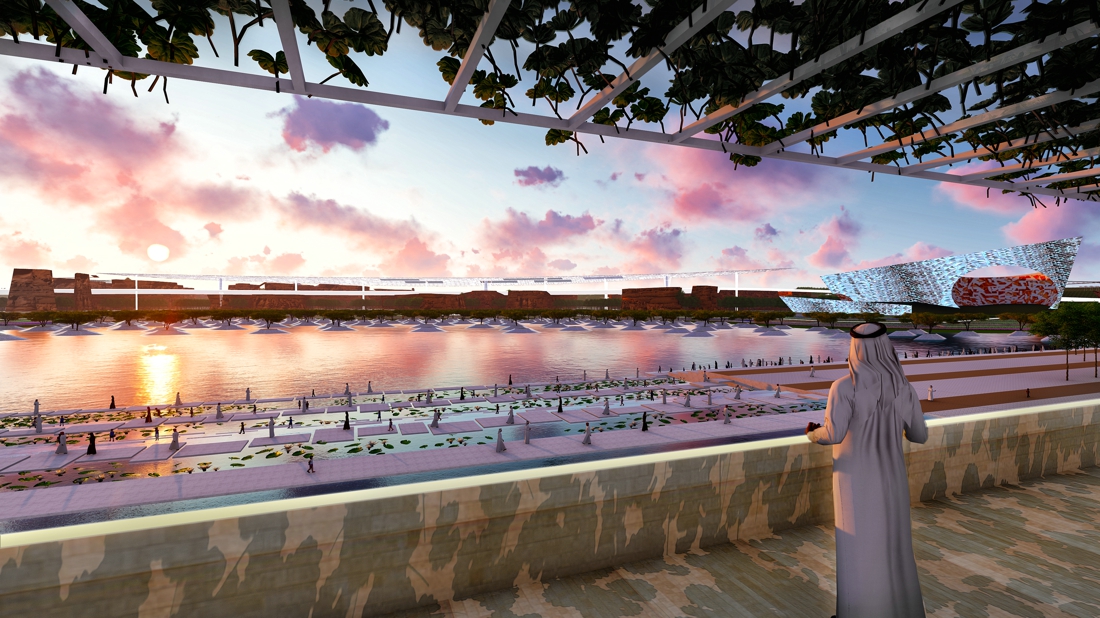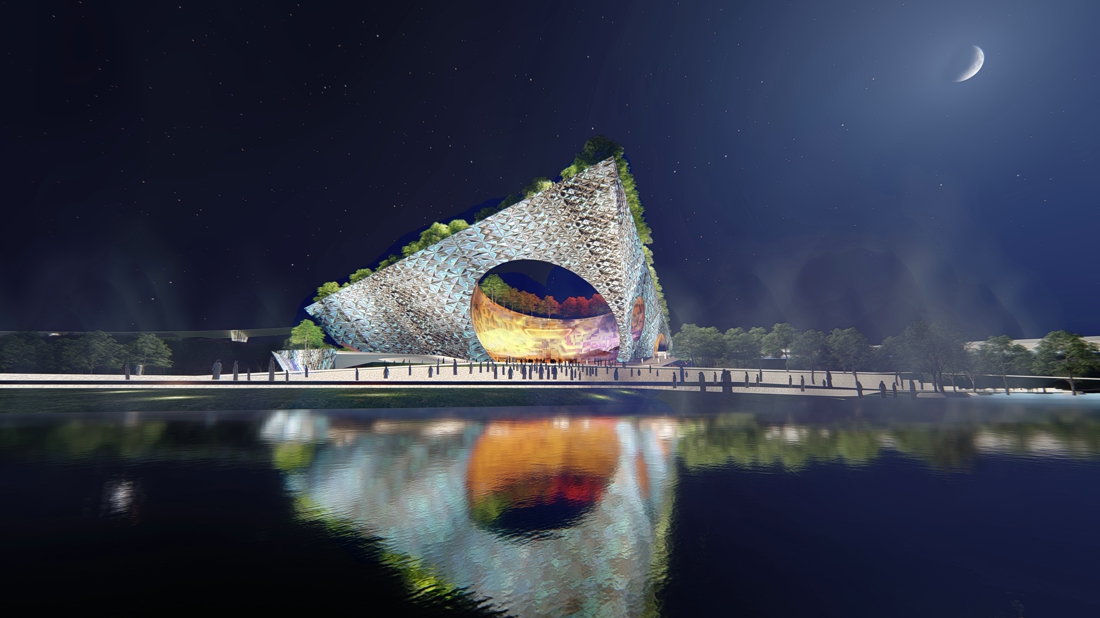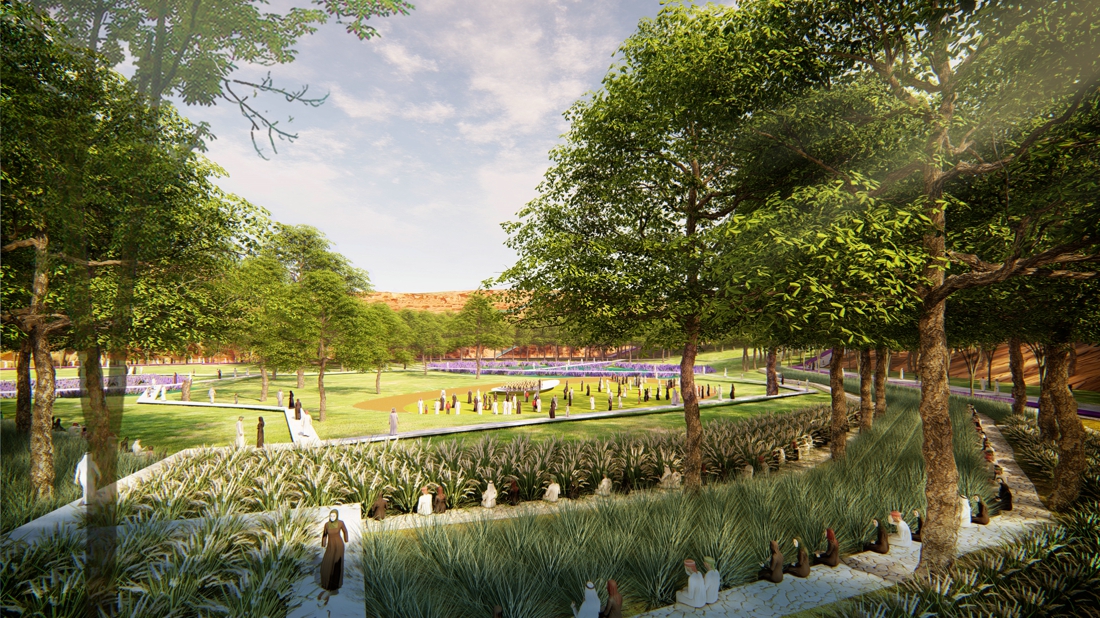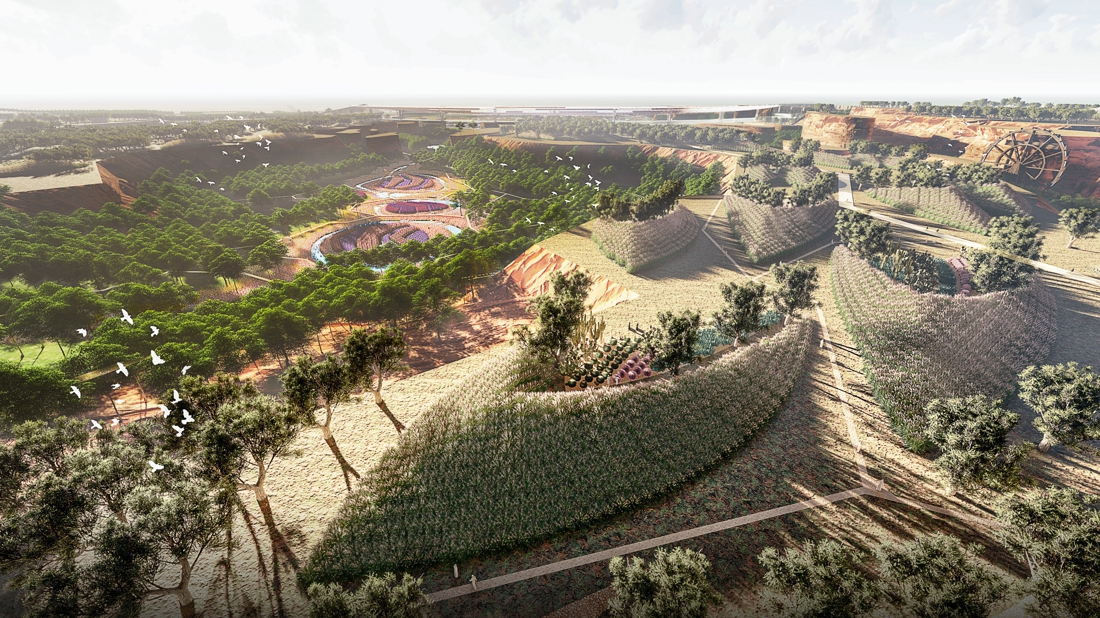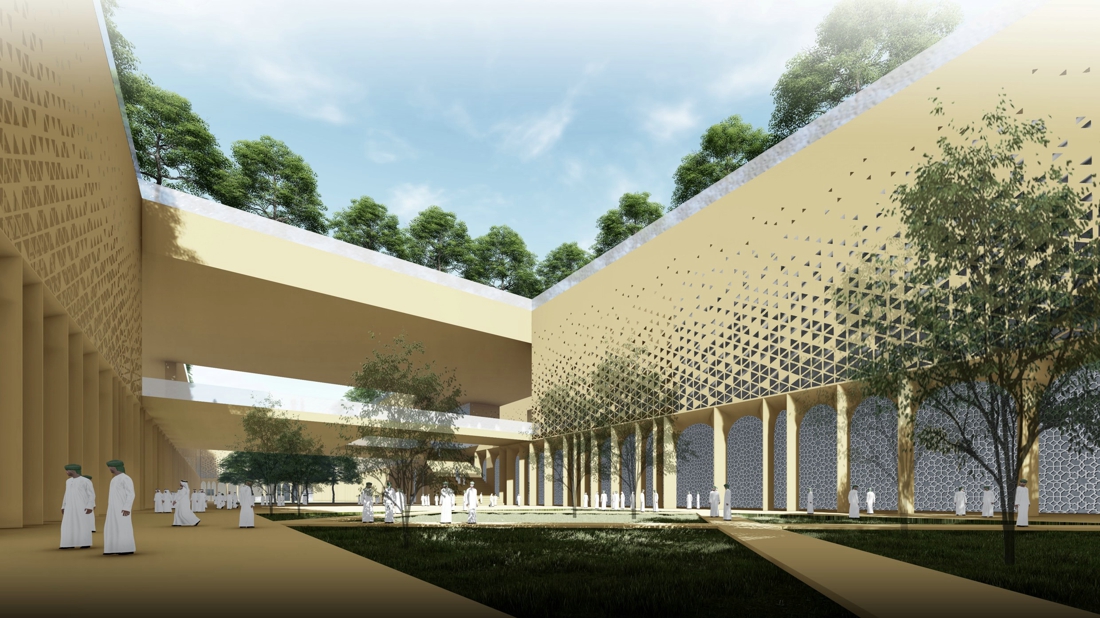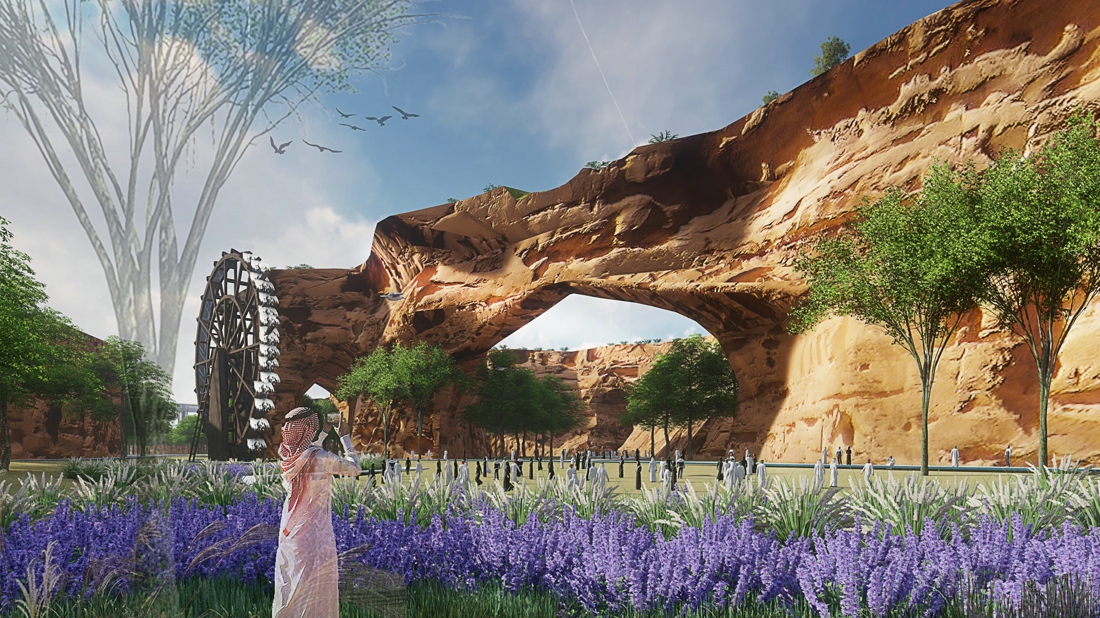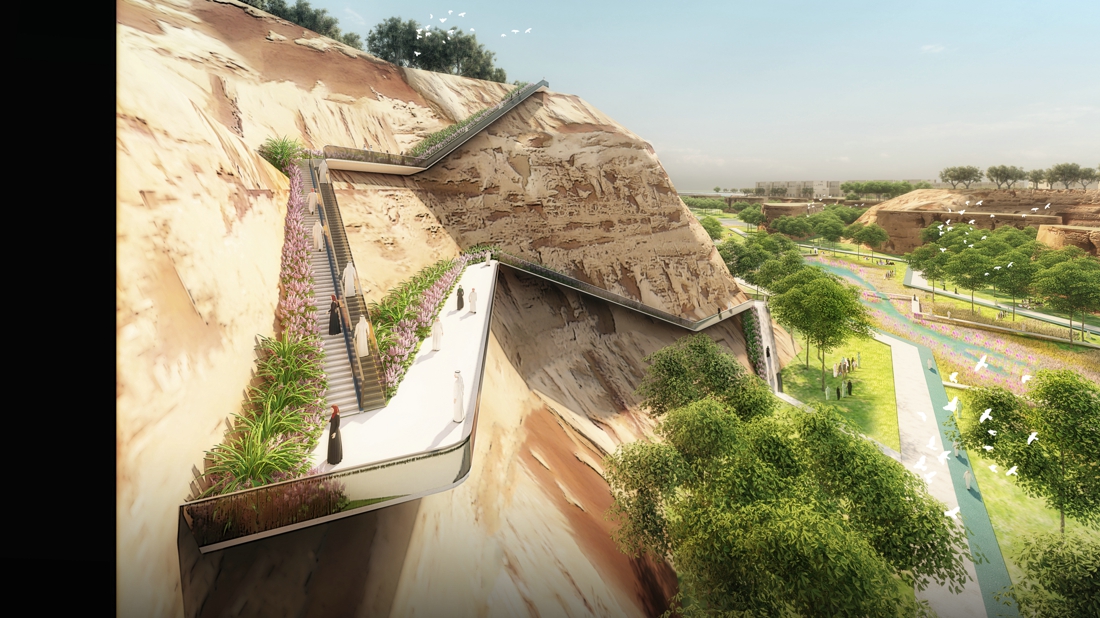Saudi Arabia Riyadh Airport Park Landscape Design
Project Information
- Project Location:
- Saudi Arabia Riyadh
- Project Scale:
- 570 Hectares
- Design Time:
- 2020
- Client:
- RCRC – Riyadh Commission for Riyadh City
Project Profile
1. Project Statement
The Riyadh Airport Park is an imagined oasis that is deeply rooted in native Arabian land and culture. Using selective construction techniques and careful management of both natural water resources and urban wastewater flows, the project will create a landscape with maximum diversity, including plateaus, wadis, savannas, wetlands and forested wetlands. This wide spectrum of native habitats will ultimately allow natural processes to take over and evolve on their own. Cultural landscape elements including a crescent-shaped skywalk, themed gardens, culture and arts venues are embedded within this created natural setting.
The oasis with a crescent celebrates the magic of a land carved by wind and water, and embodies the ancient wisdom that allowed people to not only survive in the desert, but flourish. Yet it also strives to be a vision of a Green New Era for both Saudi Arabia and the world, using a designed ecosystem to showcase ways that humankind can continue to prosper on this planet, even in the face of mounting global challenges.
2. Objective and Challenge
To create a landmark urban park with a distinct, identifying character, the following major challenges had to be addressed:
2.1 Climate
Challenges: Riyadh has an arid hot climate with an annual mean temperature of 25.7 degrees Celsius (78.2 degrees Fahrenheit). How can comfortable outdoor space best be created under such conditions?
2.2 Water
Challenges: In Riyadh, total annual precipitation averages only 101.3 mm (4 inches), while evaporation reaches 1,971 mm (77.6 inches) annually. Meanwhile, the city is increasingly suffering from severe floods, which have caused substantial property damage. There is abundant groundwater (at a depth of only 30 meters), but it is heavily contaminated. Overall, the design for the Airport Park must adequately address the issues of natural storm water drainage on the site.
2.3 Vegetation
Challenges: The cracked and poor soil is a major challenge for cultivating lush and rich vegetation.
2.4 Vitality
Challenges: The Airport Park is intended to become a global attraction that will draw both residents and foreign visitors.
2.5 Culture:
Challenges: The park needs to have a distinct identity that showcases Saudi Arabian culture.
2.6 Smart Sustainability
Challenges: The park needs to adopt multiple intelligent management and environmental protection measures to ensure sustainable operations.
3. Design Strategy
In order to address the above challenges, we took the following approaches:
Memory: The design was inspired by the natural and cultural heritage of Saudi Arabia, while the solutions address the multiple challenges that make the Airport Park unique and local. Wind and water continually carve the landscape of the Saudi Peninsula, producing wadis and dunes and allowing for desert vegetation. The traditional wisdom of agriculture, architecture and gardening, as well as the Arab and Islamic arts, are sources of inspiration for the park design.
Prophecy: The Airport Park will showcase ways to foster a sustainable future in construction. Eecological and cultural infrastructure provides holistic oasis ecosystem services to the city and its residents, including stormwater management, mitigating the harsh climate, supporting native biodiversity and providing ample recreation and education opportunities, as well as highlighting the extraordinary beauty of contrasts between hot and cool, dark and bright, dry and wet, green and brown. It will help seed a healthy new lifestyle and catalyze both new development and a spirit of innovation. The park will be a cultural icon that attracts global attention and gives the city and the nation a new identity.
3.1 Climate
Strategies: Using fractal forms, the landscape is shaped into valleys, plateaus, dunes and fault block mountains.
(1) Valleys — Increase vertical air convection, reduce solar penetration and create ventilation pathways.
(2) Cool paths — Design shaded corridors, plant canopy trees, mist spray, shaded pavilions and other cooling facilities.
(3) Fault block mountain — Create shade and cave spaces.
(4) Earth architecture — Design earth architecture with sunken gardens and cliff yards with valley shelters.
3.2 Water
Strategies:
(1) Collect and filter urban stormwater through the radiating valleys. Pretreated domestic wastewater will be cleansed through constructed wetlands in each valley, which then drain into the central lake. The waterscape is designed to handle the full range of annual flows, forming rivers in the rainy season and residual riparian greenery in the dry season.
(2) Create diverse habitats based on various water and soil situations. Soil moisture will be retained with gravel mulch. Desert-adapted vegetation and efficient drip irrigation systems will be deployed.
3.3 Vegetation
Strategy: Create diverse habitats based on various water and soil situations, inspired by the regional desert terrain and vegetation.
3.4 Vitality
Strategy:
(1) A vibrant society — A place for healthy life, entertainment and cultural exchange with various activities, during both day and night time.
(2) Night Tourism economy — Build the world's most famous night exhibition garden and ignite the night economy.
(3) International Events — Make the park a global attraction, with events such as the World Horticultural Expo, World Special Expo, etc.
(4) Good opportunities — Provide various employment opportunities especially for women, so that continue to develop their talents.
3.5 Culture:
Strategy: Green cultural landmarks — A museum belt, Islamic garden ridge, Arabian story corridor and innovative art balcony will display Saudi Arabian civilization from past to future; the crescent skywalk embodies a sense of new energy and a new era.
3.6 Smart Sustainability
Strategy: Using new energy, artificial intelligence services, extended reality, unmanned driving, waste recycling and water management and utilization, the design has established an efficient and intelligent management platform to ensure the sustainable operation and technological development of the park, so as to promote continuous self-renewal.
4. Conclusion
The Airport Park will be a world class landmark with a distinct character. It is a commemoration of Saudi Arabia’s past that is born of a deep understanding of the country’s cultural and natural heritage, and a revival of the ancient wisdom of survival in the desert. Even more so, it is a symbol of the promise that oases of ecosystem services offer for a more sustainable future worldwide.
As a key component of the Green Riyadh Program, the Airport Park will serve as a blueprint of life-giving micro-climates, low maintenance greenery, a creative society full of vitality and a Green New Era for Saudi Arabia. Nature, culture, technology and human needs are harmoniously integrated in the park. The oasis with a crescent shows the possibilities of a more sustainable future, and our place in it.
